Don't have an account? Join for free
For advertising on
Interest to become a seller? Get info
Cart
Process Equipment
Gas Turbine
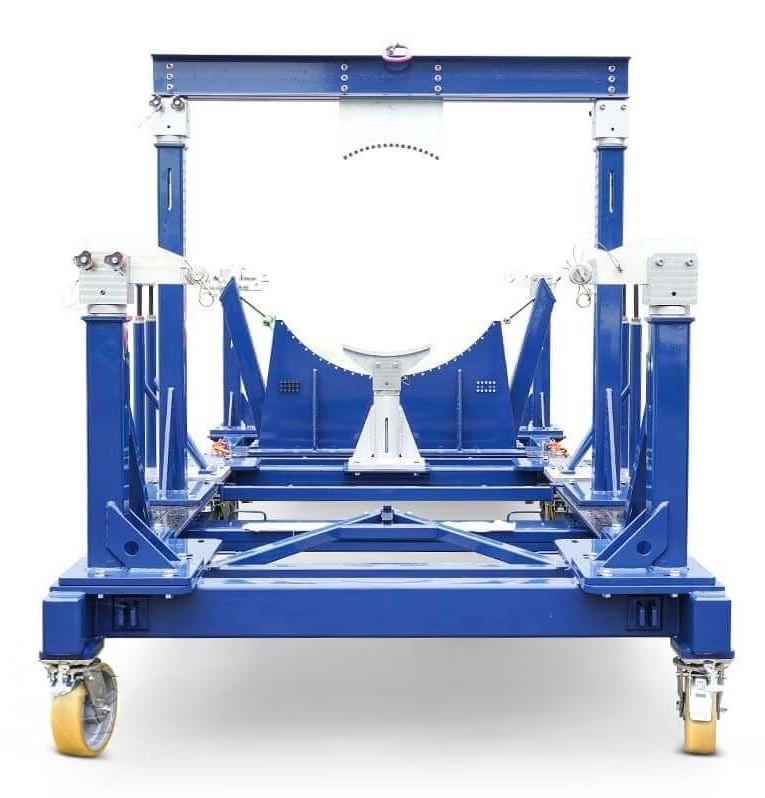
The Maintenance Dolly for LM2500 gas turbines is designed to fit the size and weight of LM2500 components, making it easier and safer to handle heavy parts during maintenance.
Key features:
This dolly supports safer and more efficient maintenance of LM2500 turbines by improving mobility, stability, and accessibility.
View Details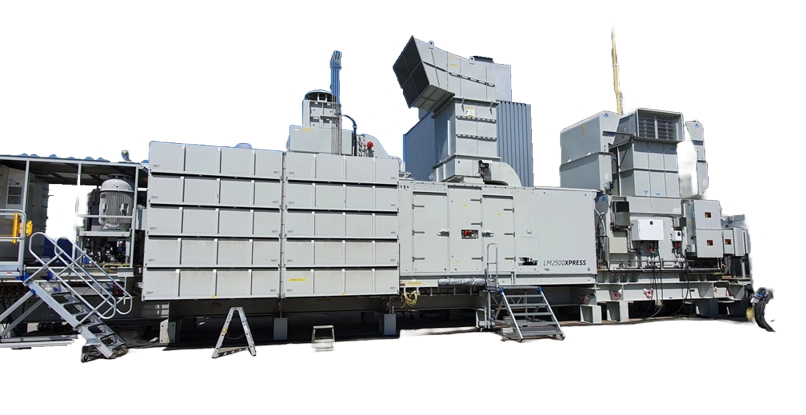
The LM2500XPRESS+G4 DLE UPT is a fast-deployable gas turbine system engineered for demanding oil and gas environments—onshore or offshore. It offers a balanced combination of power, efficiency, and installation speed, making it especially suited for upstream, midstream, and LNG operations where reliable electricity and mechanical drive are critical and timelines are tight.
At the core of this system is the LM2500+G4 gas generator, a proven design that delivers higher output and efficiency than earlier models, thanks to improvements in airflow, thermal capability, and cooling. It strikes a solid middle ground in the 20–40 MW class—powerful enough to support heavy oilfield infrastructure but lighter and more flexible than larger industrial turbines.
The Dry Low Emissions (DLE) combustion system helps meet environmental regulations without relying on water or steam injection—a major advantage for remote or offshore sites where water supply is limited or emissions compliance is strict.
The Upgraded Power Turbine (UPT) adds flexibility in terms of shaft speed and load-following, which makes this unit adaptable for various oil and gas power demands—from continuous baseload operation to backup and peaking support.
Its XPRESS configuration emphasizes rapid deployment. The turbine is delivered in a compact, modular format, pre-assembled into a small number of transportable units with simplified electrical and mechanical interconnections. This minimizes site work, shortens commissioning time to a matter of weeks, and reduces exposure to remote-site construction risks.
View Details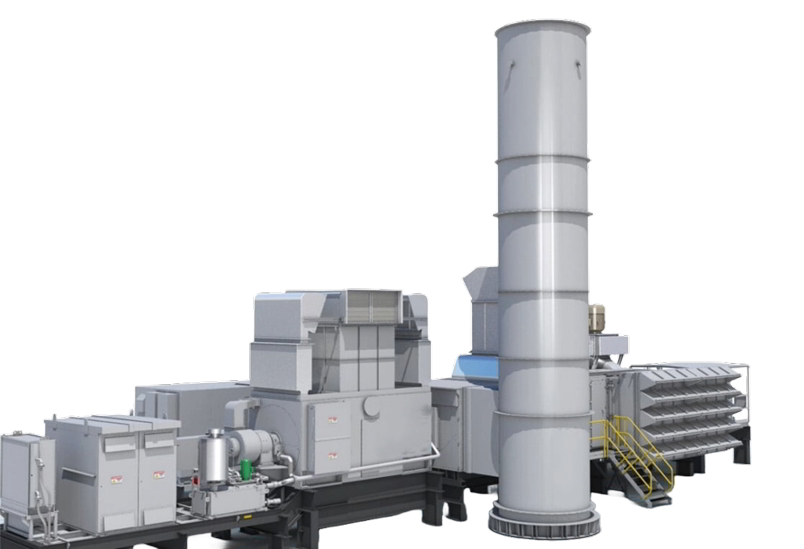
The LM2500XPRESS+G5 DLE UPT is a modular aeroderivative gas turbine system built for fast, flexible, and efficient power generation in both onshore and offshore environments. It is particularly well-suited for applications across LNG facilities, gas pipelines, gas processing plants, and general power generation, including electricity production at both 50 and 60 Hz, without the need for a speed reducer.
The "+G5" designation refers to its fifth-generation power turbine, offering the highest output and efficiency in the 20–40 MW class. It supports both high-speed and low-speed power turbine configurations, allowing integration into a variety of grid or mechanical drive systems.
At its core, the G5 includes a high-pressure compressor derived from the LM2500+G4, now redesigned for longer service life. In a simple cycle, it achieves up to 41% efficiency, which is notable for a turbine of this size class. The system can start from cold and reach load in about five minutes, making it ideal for rapid-response applications.
The unit is built for speed and simplicity. It’s shipped in preassembled modules, with a compact footprint that helps reduce installation time.
The Dry Low Emissions (DLE) system supports environmental compliance without requiring water or steam injection, simplifying operations and reducing resource demands.
Altogether, the LM2500XPRESS+G5 DLE UPT provides a practical solution for projects that need reliable, fast, and efficient power without a complex setup.
View Details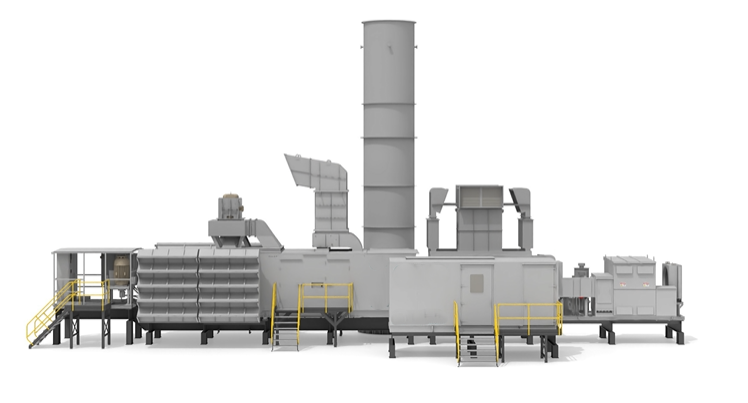
The LM2500XPRESS gas turbine is a compact and modular power system designed for fast installation and quick delivery of power when speed matters. It comes prepackaged in 10 simplified modules, which makes installation easier and faster, with only 27 electrical interconnects to manage.
This turbine is based on the proven LM2500 aeroderivative gas turbine, known for its reliability and versatility. It can be used in a wide range of power generation setups, including baseload, peaking, simple cycle, combined cycle, and cogeneration (combined heat and power) applications. The system offers dry low emissions (DLE) and can operate on gas or dual fuel.
One important feature of the LM2500XPRESS is its ability to handle daily starts and stops without increasing maintenance frequency or costs. Its free-spinning power turbine design allows it to act as a synchronous condenser without needing a clutch between the turbine and generator, which helps reduce maintenance needs and downtime.
The turbine can ramp from a cold start to full base load in about five minutes, making it ideal for situations where fast power availability is critical. Its plug-and-play design allows industrial users or grid operators to connect and begin generating electricity quickly and efficiently.
In summary, the LM2500XPRESS combines a reliable aeroderivative gas turbine with a smart, modular package designed for rapid deployment and flexible power generation.
View Details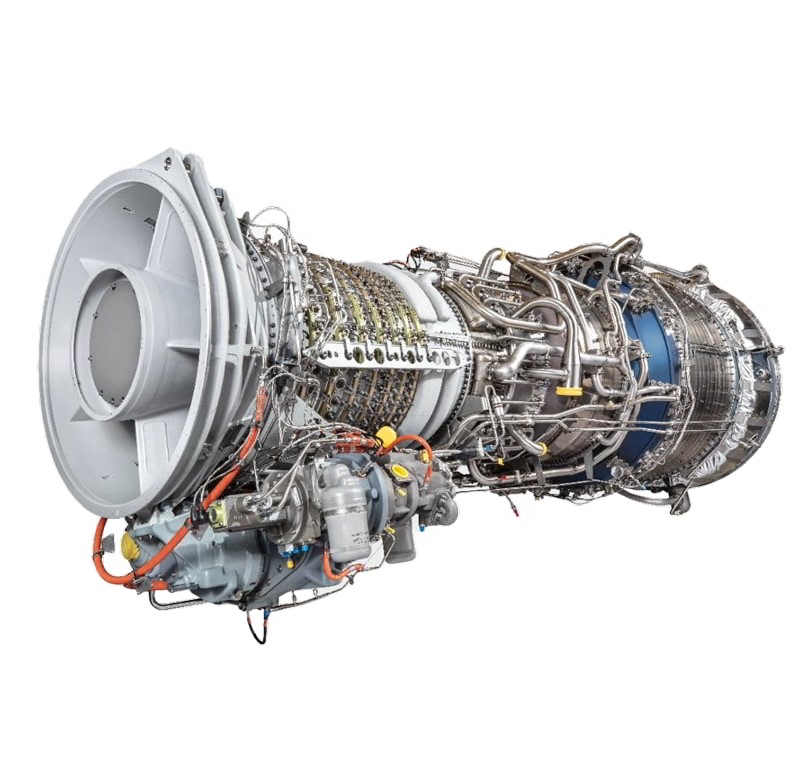
The LM2500+G4 SAC 50Hz Combined Cycle 2x1 is a high-performance gas turbine system designed for large-scale, high-efficiency power generation, particularly suited to the needs of oil and gas operations. This configuration links two LM2500+G4 gas turbines with a single steam turbine in a combined cycle layout—capturing waste heat from the gas turbines to produce steam and generate additional power. This approach significantly improves overall thermal efficiency while maintaining operational flexibility.
The Single Annular Combustor (SAC) with optional water injection helps the system meet emissions rules while keeping combustion stable and efficient. The LM2500+G4 improves on the previous +G4 model by increasing airflow, using better materials, and adding improved cooling. This allows it to produce about 10% more power without reducing the lifespan of critical hot parts. It can be equipped with either a two-stage or six-stage power turbine to fit different needs. Even with the higher power output, the +G4 keeps its modular, two-spool design, which makes maintenance easier and ensures reliable performance in many environments.
In the 2x1 configuration, the system delivers approximately 41% more power than a single gas turbine unit. The use of combined cycle technology ensures better fuel utilization, helping to reduce overall emissions and lower lifecycle operating costs.
The LM2500+G4 SAC 50Hz Combined Cycle 2x1 offers higher power, improved efficiency, and a flexible design, making it well-suited for large-scale oil and gas operations that demand reliable and efficient power generation. Its “50Hz” designation means the turbine is specifically optimized to supply electricity to grids operating at 50 cycles per second, ensuring seamless integration with regional power systems.
View Details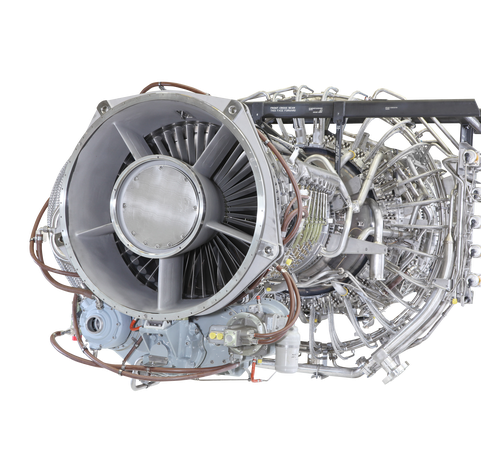
The LM2500+G4 SAC 50Hz Combined Cycle 1x1 is a gas turbine system that combines a gas turbine with a steam turbine to improve overall power generation efficiency. This configuration captures waste heat from the gas turbine exhaust and uses it to produce steam, which then drives the steam turbine, generating additional electricity. This approach helps maximize power output while making better use of fuel energy.
Building on the LM2500+ design, the LM2500+G4 increases power capability by about 10% without reducing the lifespan of critical hot section components. This is achieved by increasing airflow, enhancing materials, and improving internal cooling. Despite these upgrades, the core compressor and turbine stages, as well as most airfoil and combustor designs, remain consistent with the LM2500 model.
The LM2500+G4 features a 17-stage high-pressure compressor that raises the engine’s pressure ratio and airflow, boosting the total power output of the gas turbine to over 31 MW. It uses a Single Annular Combustor (SAC) equipped with water injection to help control emissions while maintaining stable combustion. The SAC’s simple, proven design provides uniform flame temperature and reliable operation.
This balanced system is common in industrial and energy applications where efficiency and power output must be optimized, especially under varying ambient conditions. The combined cycle setup offers a reliable and efficient solution for electricity generation in demanding environments.
View Details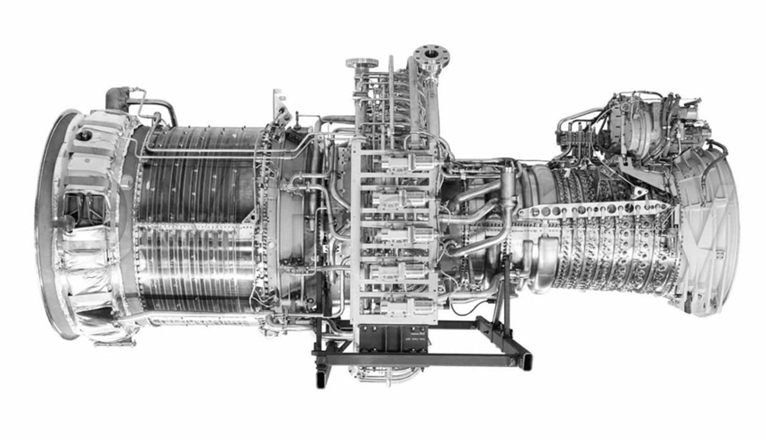
The LM2500+G4 SAC 50Hz Simple Cycle is a fourth-generation aeroderivative gas turbine of the LM2500. Designed for industrial power applications, including those in the oil and gas sector, it delivers more output and greater thermal efficiency while retaining the ease of maintenance and high reliability the LM2500 series is known for.
In a simple cycle configuration, the gas turbine generates power directly by expanding hot gases through the turbine stages, without recovering heat for additional power generation. This design is favored for its simplicity, lower capital cost, faster start-up, and suitability for mobile or remote applications.
The LM2500+G4 improves upon its predecessor by increasing airflow and turbine cooling capacity, allowing for higher operating temperatures. These changes result in up to 40% thermal efficiency in simple cycle mode—an impressive figure for this class of turbine. This translates to improved fuel usage and reduced operational costs over time.
The engine features a Single Annular Combustor (SAC), which supports stable combustion with low emissions of nitrogen oxides (NOx) and carbon monoxide (CO). The combustor is also designed for durability and long life, with easily replaceable fuel nozzles and a thermal barrier coating for resistance to high temperatures and corrosion.
Its two-spool design means the engine has no cold start limitations, making it well-suited for harsh or variable environments. The power turbine and gas generator can be separated, allowing for easier in-module repairs and less downtime.
Overall, the LM2500+G4 SAC 50Hz Simple Cycle offers a balance of power, efficiency, and maintainability, making it an attractive solution for power generation and mechanical drive needs in industrial, onshore, and offshore oil and gas operations.
View Details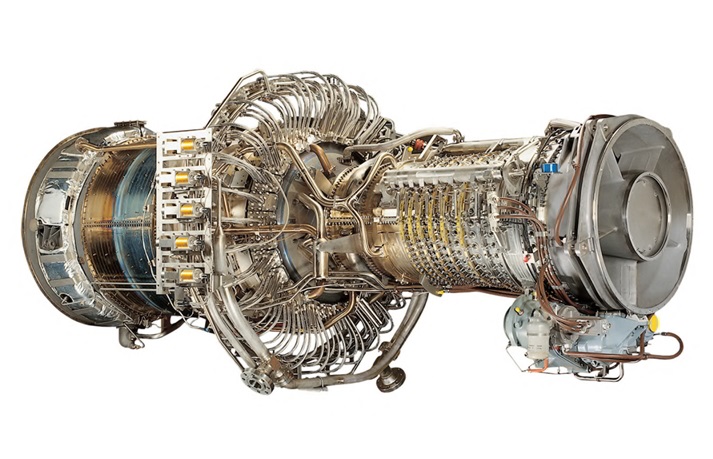
The LM2500+G4 DLE U PT is a versatile gas turbine designed for a wide range of applications, including onshore and offshore power generation, gas pipeline compression, and LNG compression. It features Dry Low Emissions (DLE) technology, which reduces nitrogen oxide (NOx) emissions to as low as 25 parts per million by volume (ppmv) at 15% oxygen, meeting stringent environmental standards.
In the oil and gas industry, production rates are closely linked to available horsepower. The LM2500+G4 DLE U PT offers higher power output, high reliability, and a lower initial cost per kilowatt, making it a cost-effective solution for energy-intensive operations.
This turbine has proven its capability to operate reliably in extreme ambient conditions, with running data demonstrating performance at temperatures as low as -50°F and start-up capability down to -40°F. This wide operational temperature range ensures dependable service in harsh environments.
Fuel flexibility is a key strength of the LM2500+G4 DLE U PT. It can seamlessly switch between various fuels—lean treated natural gas, rich offshore gas, propane, or diesel—without shutting down or losing efficiency. This flexibility supports energy security, allowing continuous operation even if the natural gas supply is interrupted. Additionally, the turbine can be adapted to burn alternative fuels like bioethanol and naphtha, further enhancing fuel options.
A notable advantage of aeroderivative gas turbines like the LM2500+G4 DLE U PT is their ability to operate on hydrogen blends, which produce no carbon emissions when combusted. Both new turbines and existing units can be converted for high hydrogen fuel use, supporting decarbonization goals.
Moreover, the LM2500+G4 DLE U PT is truly dual-fuel capable, able to switch from 100% natural gas to 100% propane without the need for pilot fuels. This contrasts with dual-fuel reciprocating engines, which typically require about 5% diesel during gas operation, increasing costs and emissions. The LM2500+G4 DLE U PT’s fuel flexibility, emission controls, and robust design make it a reliable and efficient choice for demanding mechanical drive and power generation needs in the oil and gas sector.
View Details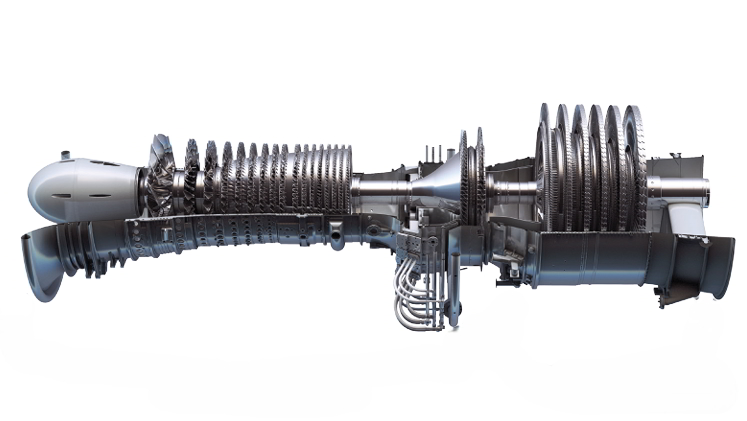
The Single Annular Combustor (SAC) version of the LM2500+G4 is designed for oil and gas applications that prioritize consistent performance, fuel flexibility, and emissions control—such as LNG facilities, gas processing plants, and pipeline compression, both onshore and offshore.
What makes the SAC version different is its simpler combustor design compared to dual annular or premix types. The SAC uses a through-flow, venturi swirler to ensure an even temperature profile at the turbine inlet, helping extend hot section life. It features individually replaceable fuel nozzles, a durable machined-ring liner, and a thermal barrier coating for better resistance to high temperatures and corrosion. This design supports both dry operation (with higher emissions) and water or steam injection to reduce NOx when needed—making it adaptable to site-specific emission regulations.
The LM2500+G4 SAC builds on the proven LM2500+ design, with approximately 10% more power. This gain comes from increased airflow, improved internal cooling, and material upgrades—while keeping the same number of compressor and turbine stages. The 17-stage high-pressure axial compressor and the basic engine layout remain unchanged, making it easy to maintain and service.
The engine can run on a wide range of liquid and gas fuels, allowing flexibility in remote or supply-constrained locations. It achieves up to 40% thermal efficiency in simple cycle mode. Water-injected operation enables NOx emissions as low as 25 ppm (gas) and 42 ppm (liquid).
In short, the LM2500+G4 SAC is well-suited for high-power mechanical drive and power generation in harsh or remote oil and gas environments, offering a balance of power output, fuel versatility, and emissions control.
View Details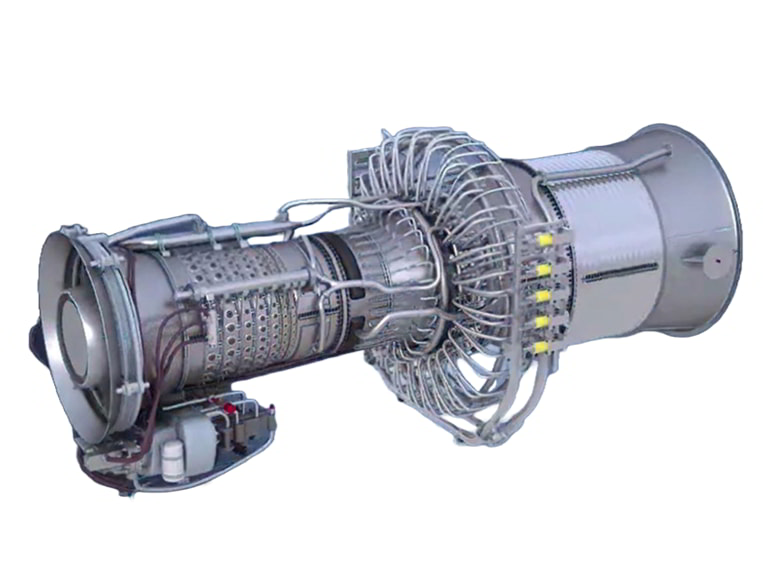
The LM2500+G4 is an advanced variant of the LM2500+ aeroderivative gas turbine, designed to provide increased output and thermal efficiency through a set of targeted design upgrades. It retains the core architecture of the LM2500+ but introduces changes to the flow path that increase overall engine performance.
The primary difference between the LM2500+G4 and the LM2500+ is the increased flow capacity in the high-pressure (HP) compressor, HP turbine, and low-pressure turbine. These modifications raise the overall pressure ratio from 23.6 to 24.2, resulting in higher thermal efficiency and greater mass flow. The design changes are relatively limited, focusing mainly on minor geometry adjustments to blades and vanes to accommodate the increased flow.
In the high-pressure turbine, the G4 version includes improved blade cooling and upgraded materials. These changes enable the turbine to handle higher temperatures, contributing to both improved performance and component durability. To maintain proper rotor thrust balance with the updated flow path, the effective area of the compressor discharge pressure seal was also adjusted.
In terms of operational performance, the LM2500+G4 offers measurable improvements over the LM2500+ across a variety of ambient conditions. For example, it delivers approximately 11% more power in cold conditions and 12% more in hot conditions (running data to -50 deg F and start data to –40 deg F). In combined-cycle mode, the G4 variant is expected to provide a power increase of 8.5% and a heat rate improvement of 0.75% compared to the LM2500+.
The LM2500+G4 supports two power turbine configurations:
Both configurations support operation over a cubic load curve, which allows the turbine to match power output with varying mechanical loads — a feature especially useful in pipeline compression and similar variable-load industrial applications.
View Details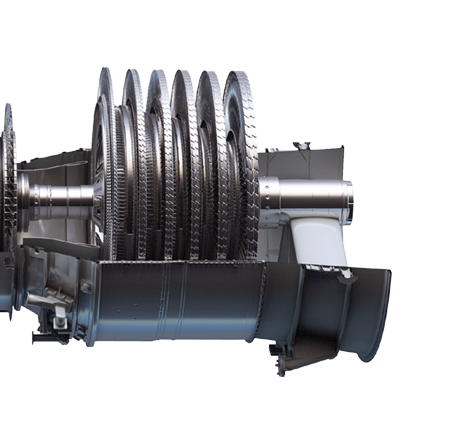
The LM2500 is a multi-shaft gas turbine featuring a free-spinning power turbine, making it well-suited for dynamic and high-demand environments such as those found in oil and gas operations. In this design, the high-pressure turbine and compressor are mechanically independent from the low-pressure power turbine. This separation allows the power turbine, which drives the electric generator or mechanical load, to respond rapidly to changes in load demand. Its ability to accelerate quickly makes it ideal for applications where maintaining grid stability or mechanical output is critical. In scenarios where frequency fluctuations occur, the free power turbine can quickly compensate, helping to stabilize the grid and ensure smoother operation of all connected systems.
In its standard configuration, the LM2500 is equipped with a six-stage, low-speed power turbine. This turbine operates at a nominal speed of 3600 rpm and is designed to deliver reliable shaft power in steady-state conditions, making it particularly effective for electric power generation or mechanical drive in pipeline and process operations.
For applications requiring greater flexibility or higher continuous output speeds, the LM2500+G4 variant offers enhanced capabilities. It is available with either the standard six-stage, low-speed power turbine or an alternative two-stage high-speed power turbine. The high-speed variant is engineered for mechanical drive and other demanding industrial uses, with a design speed of 6100 rpm and an operating range from 3050 to 6400 rpm. This configuration supports continuous high-speed shaft output where needed and is particularly beneficial for compressors and other rotating equipment in oil and gas facilities.
Both the six-stage and two-stage power turbines can be operated over a cubic load curve, providing the adaptability required for variable load profiles commonly encountered in oil and gas operations. This flexibility, combined with the LM2500’s rapid response characteristics and modular design, makes it a dependable choice for critical infrastructure in upstream, midstream, and downstream sectors.
View Details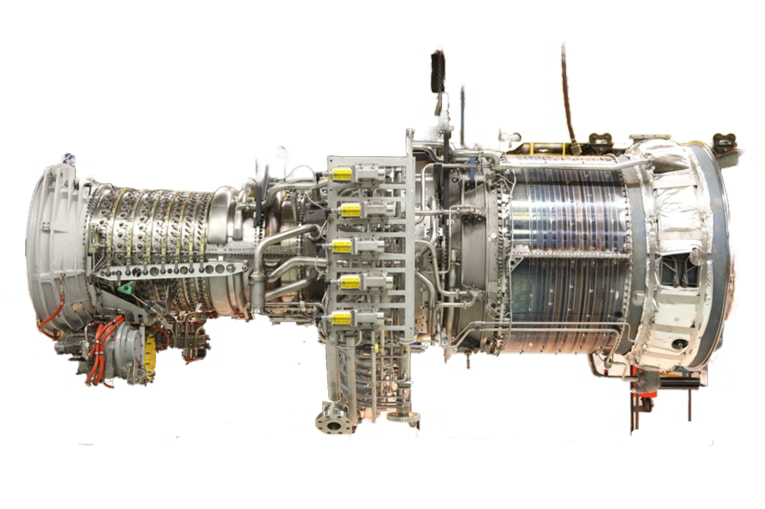
The LM2500+ DLE 50Hz Combined Cycle 2x1 system combines two LM2500+ dry low emissions gas turbines, each coupled with a Heat Recovery Steam Generator (HRSG), to power a single steam turbine. This high-efficiency configuration is engineered to meet larger capacity needs, delivering reliable, low-emission power with rapid startup capability.
At the core of this system is the LM2500+, an uprated version of the LM2500, featuring a 17-stage compressor. The addition of a forward-stage blisk increases airflow by approximately 20% at full power. This enhancement boosts the compressor pressure ratio from 18:1 to 23.1:1, contributing to higher overall efficiency and output.
Downstream of the compressor, the engine incorporates a fully annular combustor with externally mounted fuel nozzles, a two-stage air-cooled high-pressure turbine driving the compressor and gearbox, and a six-stage low-pressure power turbine aerodynamically coupled to extract energy from the high-energy exhaust flow. To accommodate the increased output, key design changes were made to the power turbine, including aerodynamic blade optimizations and rotor strengthening.
The Dry Low Emissions (DLE) system plays a crucial role in minimizing environmental impact. Its triple annular combustor lowers flame temperature, reducing NOx and CO emissions without water or steam injection—improving both thermal efficiency and maintainability.
Together, this 2x1 configuration offers a scalable solution for utility and industrial operators seeking clean, efficient, and dependable power generation at higher capacities.
View Details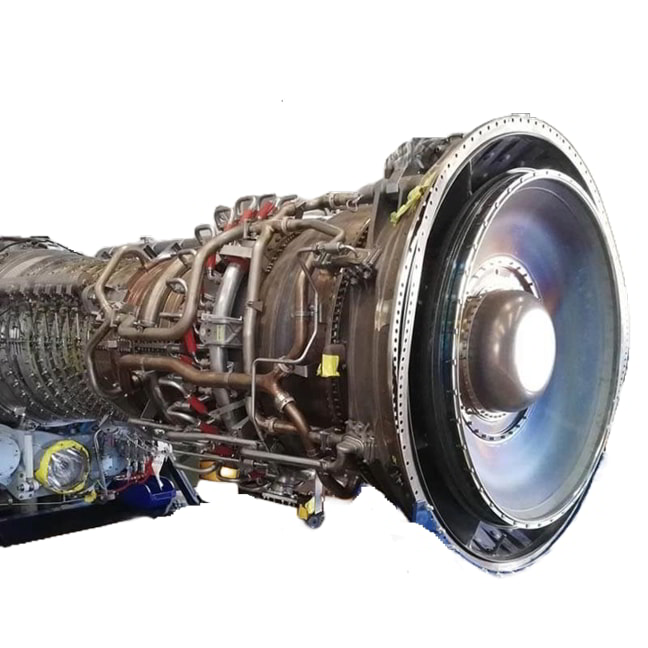
The LM2500+ DLE in a 1x1 combined cycle configuration—one gas turbine, one heat recovery steam generator (HRSG), and one steam turbine—delivers significantly higher efficiency, exceeding 50% in combined cycle mode.
Designed for high thermal efficiency, fast start capability, and reduced emissions, the LM2500 family is widely used across onshore and offshore environments, including industrial plants, pipeline stations, CHP systems, and utility-scale power production.
The DLE combustion system enables the LM2500+ to maintain low NOx and CO emissions without the need for water or steam injection—simplifying operations and reducing water-related maintenance.
Key features include:
With fast ramp-up—achieving base load from cold start in under five minutes—the LM2500 is an ideal choice for fast-start and cycling applications. This performance makes it well suited to dynamic grid environments and industrial use cases requiring quick responsiveness.
View Details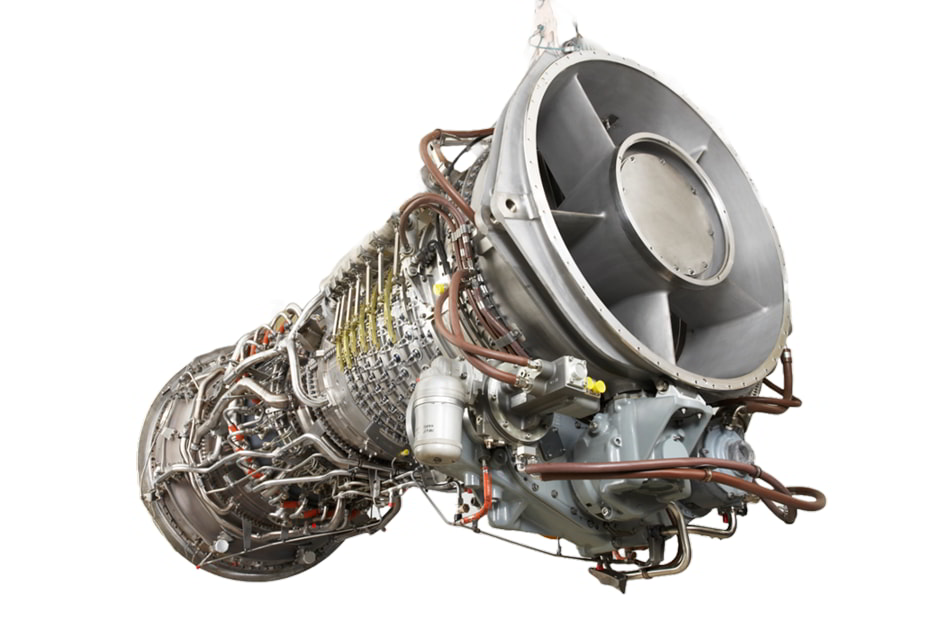
The LM2500+ DLE gas turbine is a high-performance solution for power generation in industrial, onshore, and offshore environments where emissions control and water availability are key concerns. Delivering over 30 megawatts of power and up to 40% thermal efficiency in simple cycle operation, it offers reliable performance with low environmental impact.
At the core of its design is the advanced Dry Low Emissions (DLE) combustion system, which reduces NOx and unburned hydrocarbon emissions without the need for water or steam injection. The system achieves this by precisely managing combustion conditions and lowering flame temperature. A triple annular combustor configuration enables fuel to burn more evenly at lower temperatures across a larger area, while new electrically actuated fuel metering valves enhance control and reduce complexity compared to older electro-hydraulic systems.
The LM2500+ DLE also features a 17-stage axial compressor for increased airflow and output, along with a modular, open design that enables faster maintenance and engine replacement. Its fast start capability makes it suitable for operations requiring multiple starts and stops per day.
Whether powering industrial facilities, pipeline networks, or combined heat and power (CHP) systems, the LM2500+ DLE offers a dependable and efficient gas turbine solution that balances operational flexibility with emissions performance.
View Details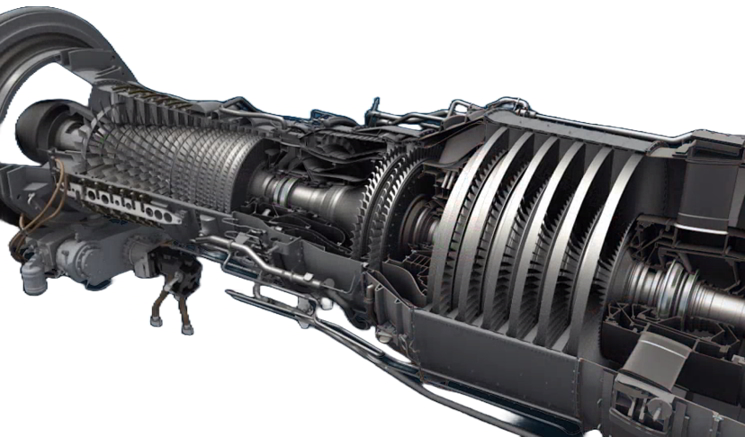
The LM2500+ DLE gas turbine is designed to provide reliable, efficient while meeting strict environmental rules. Ideal for power plants where emissions limits and water availability are critical concerns, the LM2500+ DLE provides clean, flexible, and high-performance power generation.
Using advanced Dry Low Emissions (DLE) technology, it reduces nitrogen oxide (NOx) and carbon monoxide (CO) emissions without requiring water or steam injection. This makes it especially valuable for facilities aiming to minimize environmental impact and avoid the operational complexity and maintenance costs associated with water-based emissions control systems.
The turbine’s ability to maintain NOx emissions below 25 ppm on natural gas—and as low as 15 ppm under certain conditions—ensures compliance with tough air quality standards.
With a power output exceeding 31 megawatts and thermal efficiency above 40%, the LM2500+ DLE suits a broad range of applications, from utility-scale electricity generation to industrial cogeneration and offshore power. Its fast start capability and robust cycling performance enable it to respond quickly to fluctuating grid demands, making it an excellent partner for integrating renewable energy sources.
Fuel flexibility extends the LM2500+ DLE’s usability across different operational contexts. It runs smoothly on natural gas, diesel, aviation fuels, and even hydrogen blends—offering operators confidence and versatility regardless of fuel availability or market conditions.
Maintenance is simplified thanks to the turbine’s modular design, allowing rapid access and part replacement. This reduces downtime and keeps plants running efficiently, enhancing overall productivity.
Combining power, efficiency, emissions control, and fuel flexibility, the LM2500+ DLE supports effective and compliant power generation in a variety of operational settings.
View Details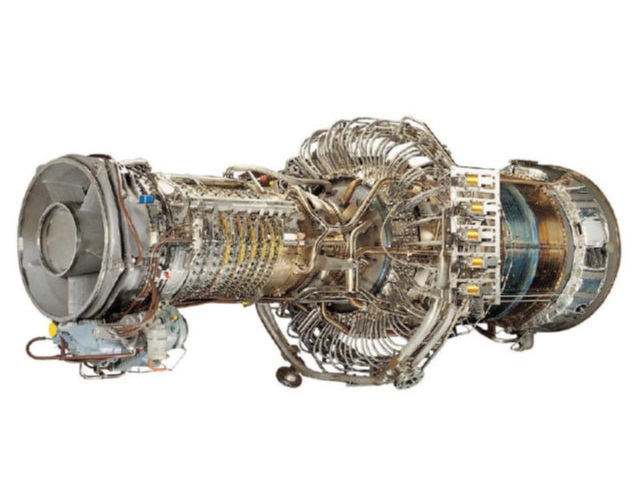
The LM2500 DLE Gas Turbine is an advanced power generation unit designed to deliver high efficiency while significantly reducing emissions. Utilizing cutting-edge Dry Low Emissions (DLE) technology, it precisely controls fuel and air mixing to minimize nitrogen oxide (NOx) emissions.
The LM2500 DLE utilizes a single-rotor gas generator with a 16-stage compressor and a two-stage high-pressure turbine, coupled with cutting-edge DLE combustion technology to reduce nitrogen oxide emissions. It supports dual-fuel operation on a wide variety of fuels, including natural gas, diesel, aviation fuel, LPG, and even hydrogen blends with concentrations ranging from 5% to 95%. The turbine’s open configuration allows for faster maintenance and quicker engine replacement, minimizing downtime.
Its key benefit is utilizing advanced aeroderivative gas turbine technology with dual-fuel Dry Low Emissions (DLE) capability, achieving ultra-low emissions of just 15 ppm NOx on gas fuel, combined with broad fuel flexibility—making it ideal for meeting strict environmental regulations while providing fast, reliable power for dynamic grid demands.
View Details
The LM2500+ gas turbine delivers increased power and improved efficiency by building on the proven LM2500 platform. Designed to meet the demanding needs of industrial and offshore operations, it offers a compact, reliable solution for power generation and mechanical drive applications.
The LM2500+ enhances the original LM2500 design by adding a 17-stage high-pressure axial compressor. This additional compressor stage increases airflow and raises the engine’s pressure ratio, resulting in roughly 20% more power output. The turbine uses a ring combustion chamber with advanced dry low emissions (DLE) technology, producing very low levels of NOx and CO emissions to meet strict environmental standards.
A key feature of the LM2500+ is its low-speed turbine section, which is specifically designed for offshore platforms and other space-restricted environments. This turbine’s compact size and modular design allow for easy maintenance, with split compressor casing and in-place blade replacement that reduce downtime and operational complexity. The turbine is factory-tested and pre-wired for straightforward installation, supporting both 50 Hz and 60 Hz power generation without the need for additional equipment like reducers.
Operators benefit from the LM2500+’s enhanced power and fuel efficiency, which help reduce operational costs and improve performance in applications such as combined heat and power systems, industrial power generation, underground gas storage, and gas pipelines. Its modular, space-saving design fits well in offshore installations where size and weight are critical factors.
the LM2500+ ensures continuous performance and maximizes uptime, making it a trusted solution for critical power needs across various industrial and offshore applications.
View Details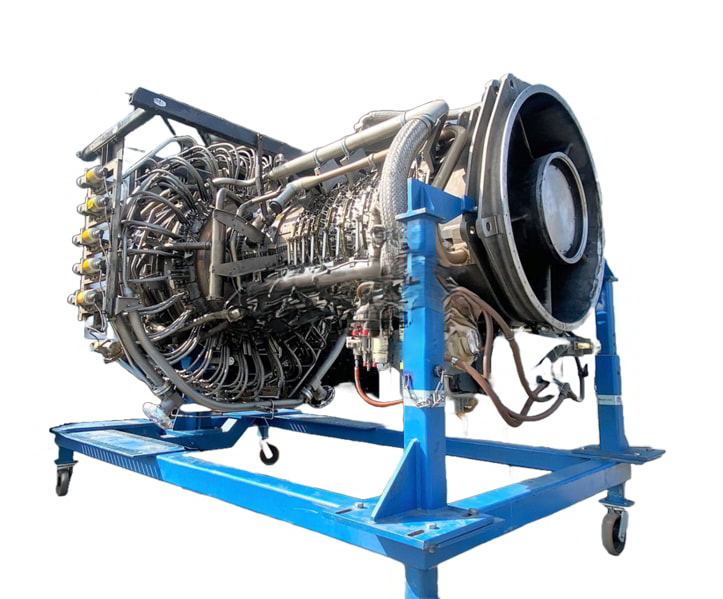
The LM2500 Gas Generator is the core component of the LM2500 gas turbine, responsible for producing the high-energy gas flow needed to drive the power turbine. It features a 16-stage axial compressor that efficiently compresses incoming air, a single annular combustor where fuel and air mix for optimal combustion, and a two-stage high-pressure turbine that extracts energy to power the compressor.
Designed for durability and high performance, the LM2500 Gas Generator supports a wide range of fuel types, including natural gas and liquid fuels, enabling flexible operation in various industrial and marine settings. Its modular construction allows for easier maintenance and faster engine removal or replacement, minimizing downtime.
With advanced aerodynamics and robust engineering, the LM2500 Gas Generator delivers reliable, efficient gas flow, helping ensure consistent power output and lower emissions across demanding operating conditions.
View Details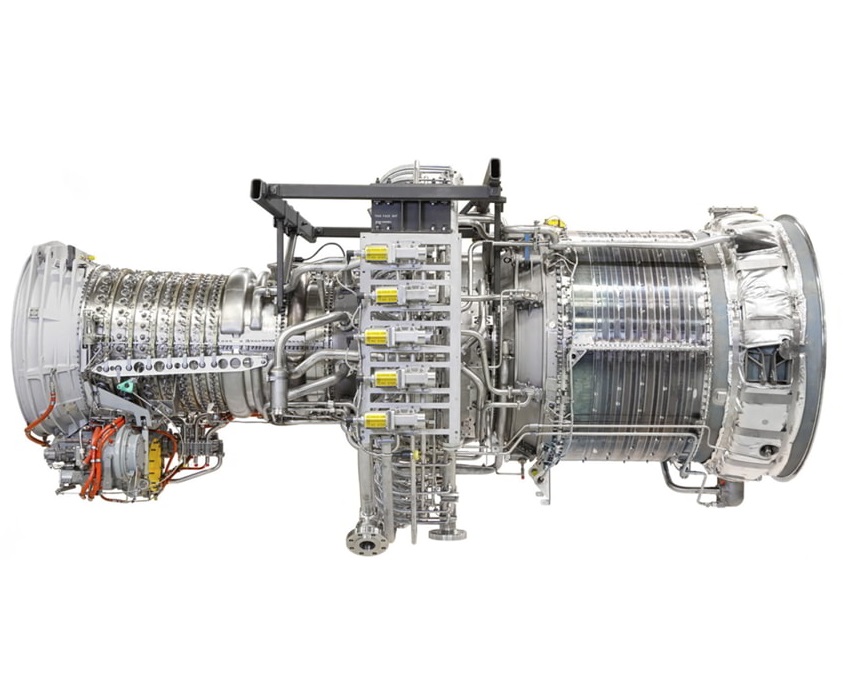
The LM2500 SAC Gas Turbine features a Single Annular Combustor (SAC) system—a type of combustion chamber where fuel and air are mixed and burned in a single, annular-shaped chamber. This design allows for efficient combustion with lower emissions and better fuel-air mixing. The turbine also supports dual-fuel capabilities, operating on both gas and diesel, offering greater flexibility in environments where fuel availability may vary.
Its open configuration is designed for accessibility, making maintenance tasks faster and more straightforward. This also allows for quicker engine removal or replacement, helping reduce downtime during service operations.
The LM2500 SAC is widely used across multiple industries, including electrical power generation, mechanical drive systems, and marine propulsion, due to its reliability, fuel flexibility, and proven performance in demanding conditions.
View Details
The LM2500 Gas Turbine is a high-efficiency power unit designed for use in industrial, marine, and utility applications. It’s commonly used for grid support, combined heat and power, and in mobile or remote power installations.
The turbine uses a single-rotor gas generator that can be connected to a power turbine. Inside, it includes a 16-stage compressor, an annular combustor, and a two-stage high-pressure turbine—to deliver strong performance in demanding environments.
Built for flexibility, the LM2500 is well-suited for operations that require frequent start-and-stop cycles. It can ramp up from a cold shutdown to full power in under five minutes, making it a reliable option for fast, on-demand power delivery.
Adding to its versatility, the LM2500 supports a wide range of fuels—including natural gas, diesel, aviation fuel, naphtha, LPG, ethane, ethanol, biodiesel, and more. This fuel flexibility makes it easy to integrate into different operating environments.
Its proven adaptability and performance have made the LM2500 the most widely used gas turbine in the 25–37 megawatt range.
In addition to high efficiency and reliability, the LM2500 delivers low emissions—even in challenging environments or when water availability is limited. With control system redundancy and several configuration options, it offers a customizable solution for dependable, efficient power generation.
View Details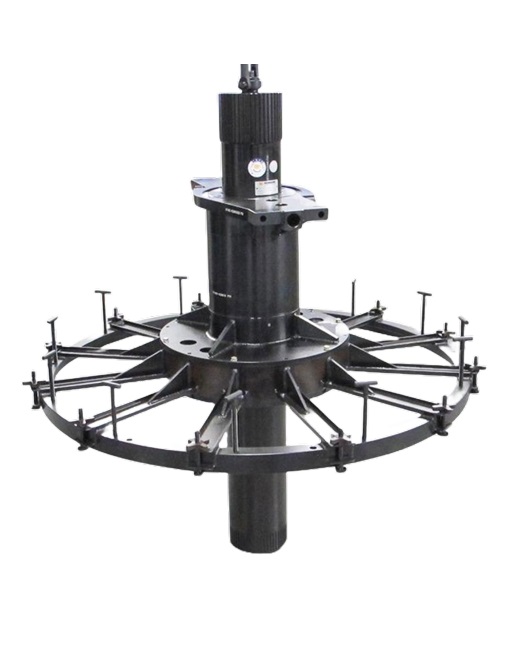
The LM2500 Wrench – Horizontal/Vertical HPT Coupling Nut is a specialized maintenance tool designed for the LM2500 gas turbine engine. This wrench is used to install and remove the High Pressure Turbine (HPT) coupling nut, a critical component that secures the HPT rotor to the turbine shaft.
Removing and installing the coupling nut is necessary during major maintenance activities like rotor inspections, repairs, or when replacing key turbine components. Proper removal allows technicians to safely separate the rotor from the shaft, while correct installation ensures the rotor is securely fastened for reliable engine operation.
What makes this wrench stand out is its ability to work with both horizontal and vertical engine positions. This means technicians can use it easily no matter how the engine is set up, making maintenance simpler and more flexible.
Built to precise standards and made from tough materials, the wrench ensures the right amount of force is applied when tightening or loosening the coupling nut. This careful control helps protect the engine’s important parts from damage.
By using this wrench, maintenance teams can complete their work faster and with confidence, reducing downtime and keeping the turbine reliable. It’s an essential tool that supports the smooth operation of the LM2500 engine.
View Details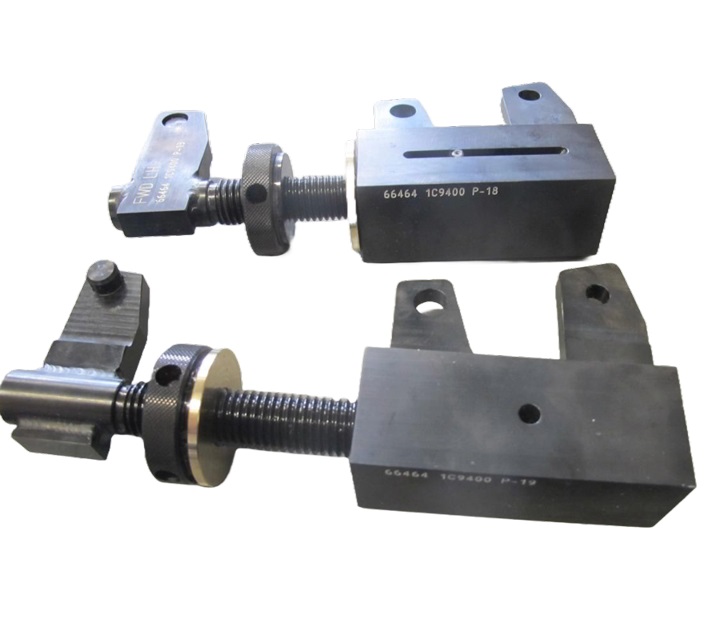
LM2500 Fixture, Hinge – Upper Compressor Case is a specialized tool set designed to safely raise and hinge open the upper compressor case of the LM2500 gas turbine engine. This fixture is essential during major maintenance, inspection, or overhaul activities where access to the engine’s internal compressor components is required.
The fixture allows maintenance teams to lift and securely hold the heavy upper compressor case in a hinged, open position. This provides stable and safe access to the compressor rotor and other internal parts, ensuring technicians can carry out detailed inspections or repairs without risking damage to sensitive components.
Made from strong, durable materials, the fixture set is built to support the heavy upper compressor case while keeping everything properly aligned. Its reliable locking and hinge system holds the case securely in place, helping protect the gas turbine.
Compatible with both OEM and MRO procedures, this fixture supports efficient, repeatable maintenance practices and helps reduce overall engine downtime. Whether used in the field or in a dedicated maintenance facility, the LM2500 Hinge Fixture is a critical tool for safe and effective servicing of the LM2500 engine’s compressor section.
View Details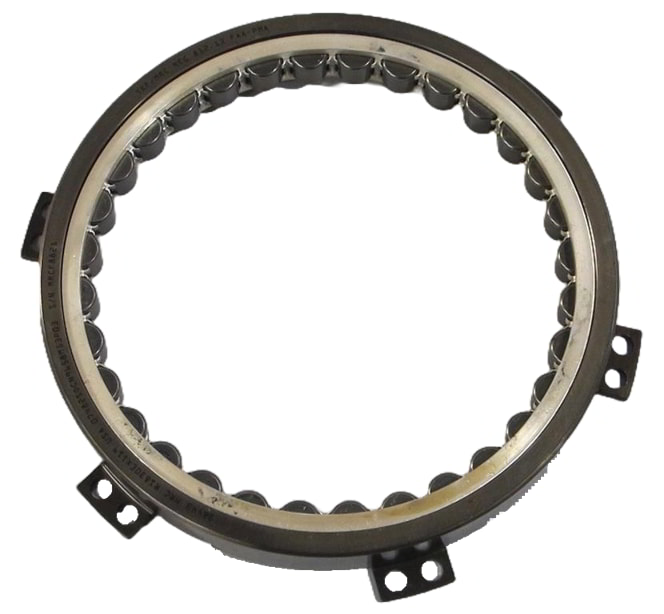
The Bearing, Roller, Cylindrical No. 6R is a precision-engineered component used in LM2500 aero-derivative gas turbines commonly employed in the oil and gas sector. Installed at the No. 6R position, this cylindrical roller bearing supports the turbine’s rotor shaft by carrying radial loads and maintaining accurate shaft alignment during high-speed operation.
Its specialized roller design allows it to withstand intense mechanical stresses and thermal changes typical in demanding oil and gas environments. By reducing vibration and ensuring smooth rotation, the bearing contributes to stable and efficient turbine performance, which is critical for continuous operation in upstream, midstream, and downstream applications.
The No. 6R bearing’s role in maintaining precise shaft positioning supports the overall durability and reliability of LM2500 turbines used in gas compression, power generation, and offshore platforms, making it a key element in sustaining safe and efficient operations within the oil and gas industry.
View Details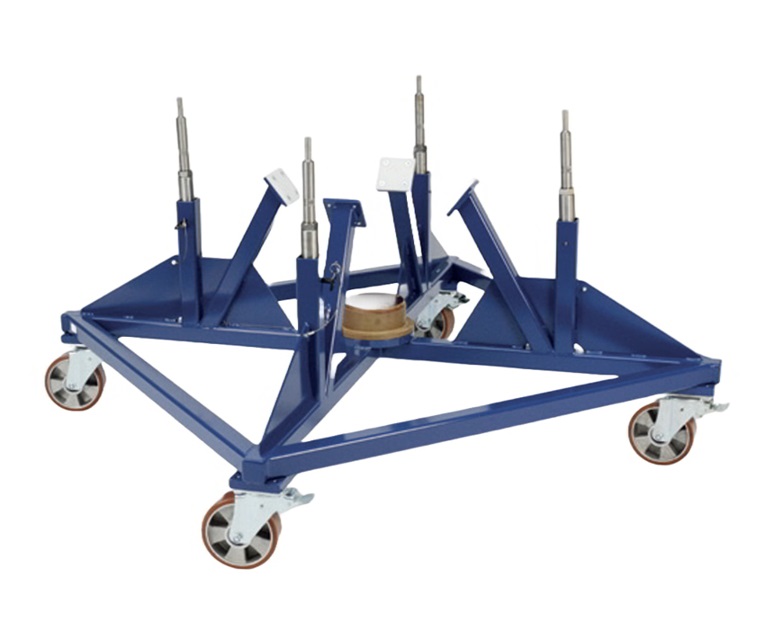
The LM2500 High Pressure Turbine (HPT) Vertical Stand is a support fixture designed to hold the HPT module of the LM2500 gas turbine in a vertical position. It is mainly used during maintenance, inspection, or transport of the turbine module.
By keeping the turbine upright, the stand helps ensure that the module stays stable and properly aligned while work is being done. This setup also makes it easier for technicians to access certain areas of the HPT that would be harder to reach if the module were lying flat.
The stand is built to handle the weight of the HPT and includes features like mounting points or forklift slots for safe and easy movement within a workshop or maintenance area. It is commonly used in the oil and gas industry where LM2500 turbines are found in power generation or mechanical drive applications.
In short, the HPT Vertical Stand is a practical tool that helps keep the turbine secure, makes maintenance tasks safer, and supports good handling practices.
View Details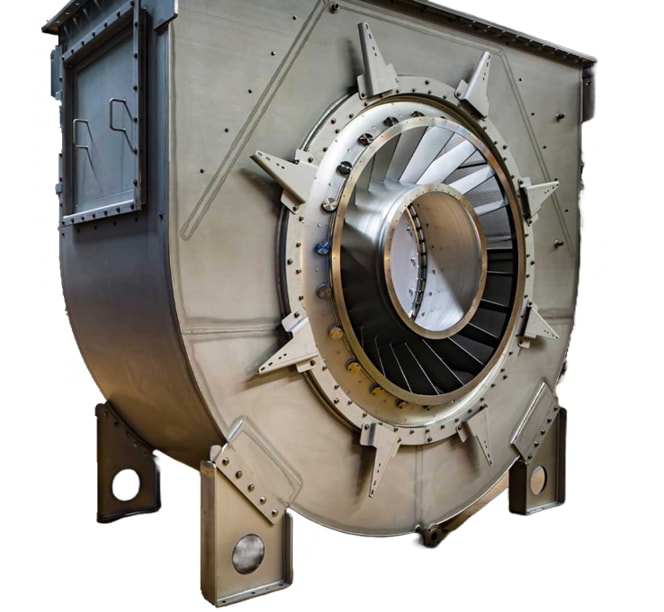
The LM2500 exhaust system is an essential part of the LM2500 gas turbine, designed to handle the hot gases produced during turbine operation. Made from high-quality stainless steel, it is built to withstand extreme temperatures and harsh conditions, ensuring long-lasting durability.
The main purpose of the exhaust system is to safely direct these hot gases away from the turbine while reducing back pressure. Back pressure is the resistance the turbine faces when pushing out exhaust gases—lower back pressure means the turbine can run more efficiently, producing more power with less stress on its components.
This exhaust system is carefully designed to match the specific needs of the LM2500 turbine, ensuring smooth and efficient gas flow. It often works together with silencers or emission controls to release gases safely into the atmosphere while meeting environmental standards.
You would look for a new or replacement LM2500 exhaust system when installing a new turbine, upgrading to improve performance, replacing worn or damaged parts, or meeting updated environmental regulations. Choosing the right exhaust system is crucial because it directly affects the turbine’s performance, reliability, and maintenance costs. A well-designed exhaust system helps keep the turbine running efficiently and reduces the chance of costly downtime—critical factors for operations in oil and gas industries where reliability and efficiency are vital.
View Details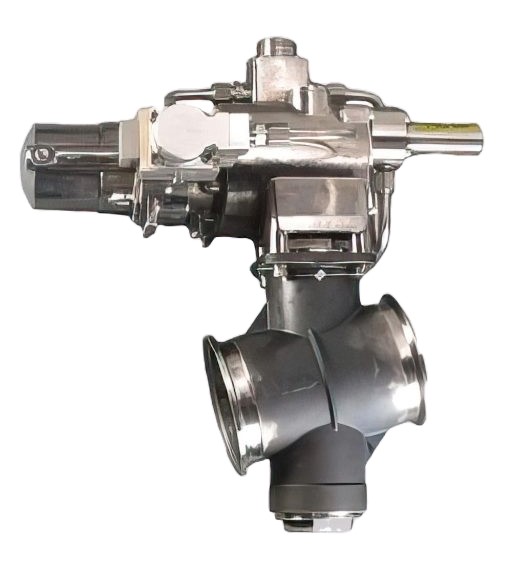
The 4″ butterfly bleed air valve plays a crucial role in controlling the flow of compressed air, called bleed air, from the compressor section of a gas turbine. This airflow regulation helps maintain safe and efficient turbine operation by managing pressure and protecting internal components.
This valve is built with a strong bearing shaft and specially designed bearings that handle frequent cycles, ensuring a longer service life and less maintenance. It includes a fail-safe feature that automatically opens the valve if a problem occurs, protecting the turbine from damage. With a quick response time—fully opening or closing in less than 320 milliseconds—it reacts fast to changing engine conditions. The valve’s electric components are also better insulated from heat, improving reliability even in harsh environments.
What makes the 4″ valve stand out is its ideal size and performance. It offers greater airflow than smaller valves, yet remains compact and easier to fit than larger ones, making it perfect for medium-duty applications where space and precise control are important.
Importantly, this valve is designed as a direct, plug-and-play replacement for existing models. It requires no changes to the hydraulic or electrical systems, allowing for quick upgrades without downtime. This seamless fit and reliable operation help ensure your gas turbine runs smoothly and efficiently, reducing costs and increasing uptime.
View Details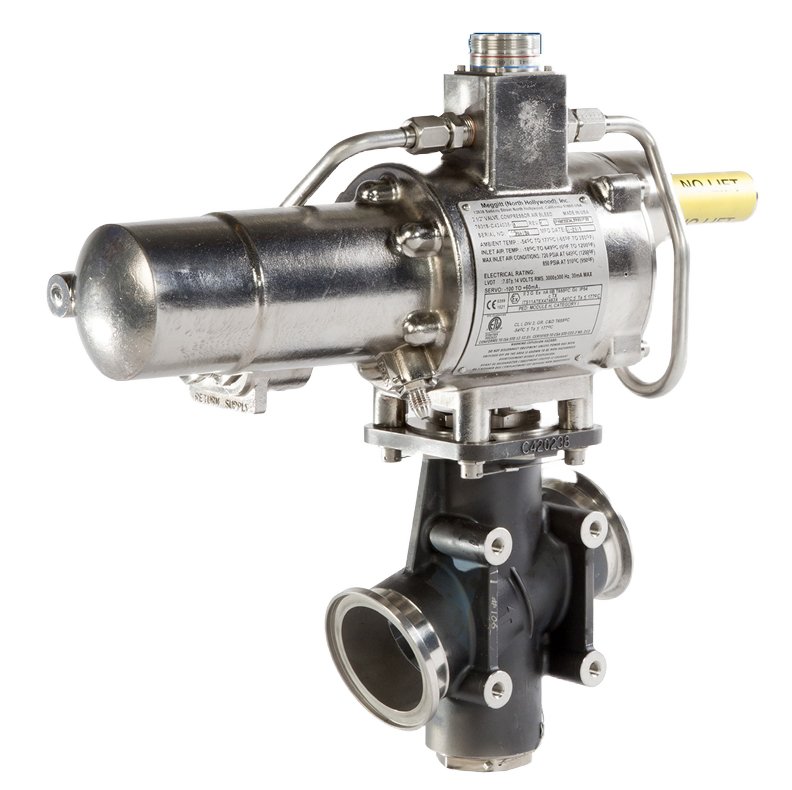
The 2.5″ Butterfly Bleed Air Valve is a critical component in the LM2500 gas turbine, responsible for regulating the flow of bleed air—compressed air extracted from the turbine’s compressor stage. This valve helps control internal pressures and temperatures, which is essential to maintain safe and efficient turbine operation.
The valve has an effective flow area of 2.5 square inches, allowing it to manage airflow precisely in smaller turbine setups or space-restricted environments. Its butterfly-shaped disc is permanently attached to the shaft, which ensures consistent movement and reliable control of air flow with minimal play or slippage.
One important feature is its fast response time—less than 320 milliseconds to complete a full open or close stroke. This quick action enables the turbine control system to rapidly adjust pressure levels, preventing overheating and reducing mechanical stress on turbine components.
The valve’s bearing shaft is robustly designed to handle frequent small movements, known as dither cycles, without premature wear. The bearings themselves are specifically engineered to support these high-cycle conditions, improving the valve’s durability and lifespan.
By efficiently managing bleed air, this valve helps protect the turbine from excessive pressure build-up and thermal stress, which can otherwise lead to damage or reduced efficiency. Its design also allows installation without requiring changes to the turbine’s hydraulic or electrical systems, making it suitable for retrofits or upgrades on existing LM2500 turbines.
In summary, the 2.5″ Butterfly Bleed Air Valve plays a vital role in controlling compressor bleed air in LM2500 turbines, balancing safety, performance, and durability within compact or smaller turbine applications.
View Details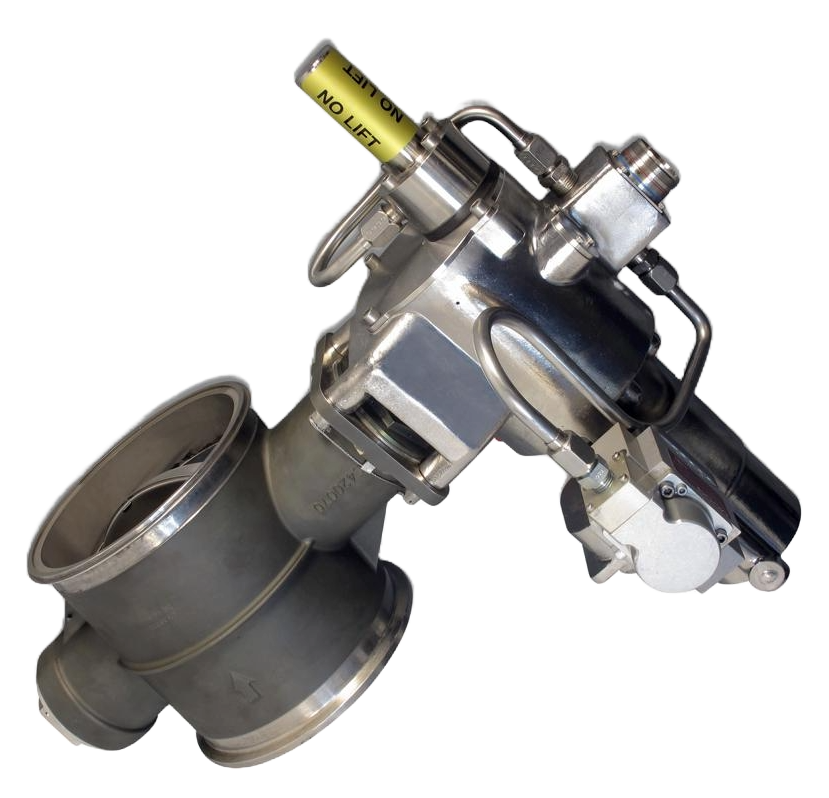
The 6″ Butterfly Bleed Air Valve is designed to regulate the flow of compressed bleed air from the compressor section of large gas turbines, such as the LM2500. This valve uses a butterfly-shaped disc permanently attached to a robust shaft, allowing precise control over airflow to reduce pressure and temperature within the turbine system.
With an effective flow area of 19.1 square inches max, this valve accommodates higher volumes of bleed air, making it suitable for turbines with greater airflow requirements. It features a fast response time—less than 320 milliseconds for a full stroke—ensuring timely adjustments to changing operating conditions. The valve’s bearings are engineered for high cycle service, providing durability and reliability even under frequent opening and closing cycles.
The 6″ valve helps protect turbine components by managing thermal loads and maintaining optimal compressor performance, which in turn improves overall turbine efficiency and extends equipment life. It is commonly used in oil and gas applications where maintaining safe, efficient, and reliable turbine operation is critical. This valve also serves as a drop-in replacement in existing turbine systems, requiring no hydraulic or electrical modifications, simplifying installation and reducing downtime.
View Details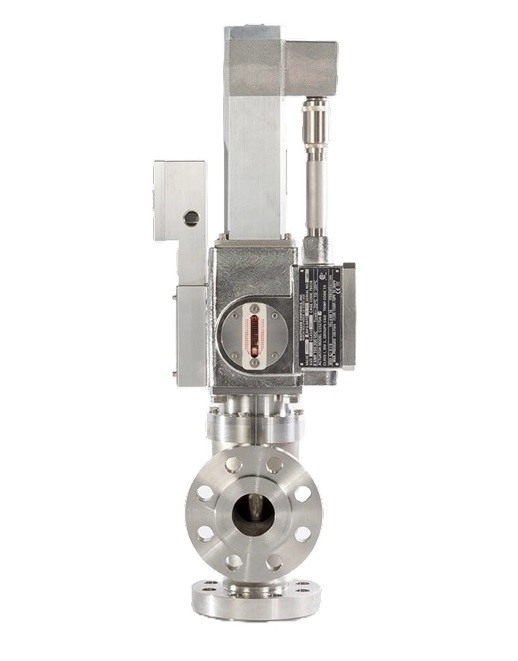
The 2″ Gas Metering Valve is designed to precisely control the flow of gas fuel in aero-derivative gas turbines, including the LM2500. By adjusting fuel delivery based on operating conditions, it maintains the optimal fuel-to-air ratio essential for safe, efficient, and reliable turbine operation.
Fuel metering valves act as the throttle control for gas turbines. Since turbines generate power by burning fuel mixed with compressed air, accurate regulation of this mixture directly impacts power output, efficiency, and emissions such as nitrogen oxides (NOx) and carbon monoxide (CO).
This valve delivers exceptional accuracy within ±1% of the flow point, ensuring consistent fuel delivery and optimal combustion. It is built to perform reliably in demanding environments and meets safety standards including ATEX, PED, and UL, certifying it for use in hazardous and extreme conditions.
The fuel metering valve is a two-inch right-angle style valve commonly used on aero-derivative turbines. It integrates easily into existing systems without requiring hydraulic or electrical changes. With millions of hours of proven field performance, it offers dependable, precise fuel control that enhances turbine efficiency and reduces fuel consumption.
View Details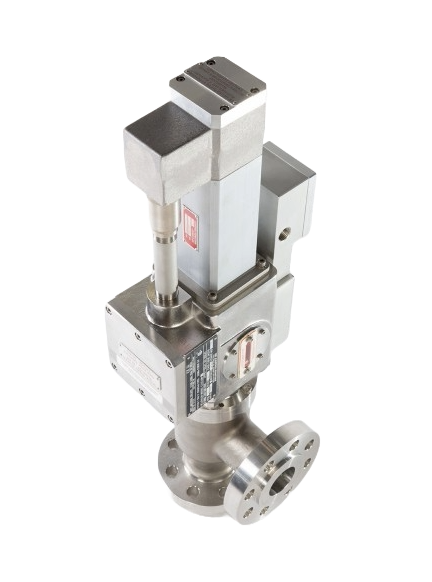
The 2” Globe-Style Gas Metering Valve is designed to provide precise regulation of fuel gas flow in industrial and aero-derivative gas turbines. Its globe valve design offers excellent throttling capabilities, allowing fine control over fuel delivery to maintain the optimal fuel-to-air mixture necessary for efficient combustion. This precise control is crucial for achieving stable turbine performance, reducing emissions, and optimizing fuel consumption.
Constructed with robust materials, the valve is built to withstand the high pressures and temperatures commonly encountered in gas turbine applications. Its durable design ensures long service life and reliable operation even under demanding conditions. The valve features foolproof electrical cables and connectors, enhancing installation safety and reducing the risk of connection errors.
The valve’s compact size and right-angle configuration facilitate straightforward integration into existing turbine fuel systems. Compared to previous models, this valve is an upgrade due to its improved electrical interface and enhanced durability, which reduce maintenance needs and increase operational reliability.
By accurately controlling fuel flow, the 2” Globe-Style Gas Metering Valve helps prevent issues such as flame instability and combustion inefficiency, contributing to smoother turbine operation and lower maintenance costs. It is widely used across various turbine models, including aero-derivative and small- to mid-frame industrial turbines, where precise fuel metering is critical for maintaining performance and compliance with environmental standards.
View Details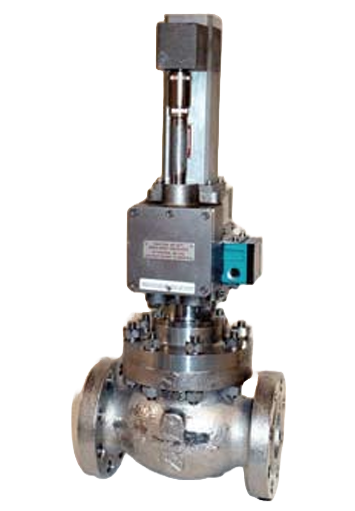
The 3” Globe-Style Gas Metering Valve is designed to deliver accurate and consistent fuel control in industrial gas turbines, including both Dry Low Emissions (DLE) and Single Annular Combustor (SAC) engine types. This valve ensures that the correct amount of gas fuel is metered into the engine based on real-time operating conditions—essential for achieving stable combustion, optimal turbine performance, and reduced emissions.
With an accuracy of ±3% of flow point and a full-stroke response time of 175 milliseconds, it supports precise adjustments to the fuel-to-air ratio, even under fluctuating load conditions. This level of performance is critical for maintaining turbine efficiency, lowering NOx and CO emissions, and supporting regulatory compliance.
The globe-style design allows for smooth fuel flow control, making it ideal for high-capacity, high-pressure turbine applications, such as those found in the oil and gas industry. Built to withstand extreme temperatures and pressures, the valve is available with certifications such as ATEX Zone 1 and 2, PED, UL, and NEC Class 1, ensuring safe operation in hazardous environments.
This metering valve supports modern turbine control systems and is part of a generation of components that prioritize long-term reliability, reduced maintenance needs, and consistent field performance.
View Details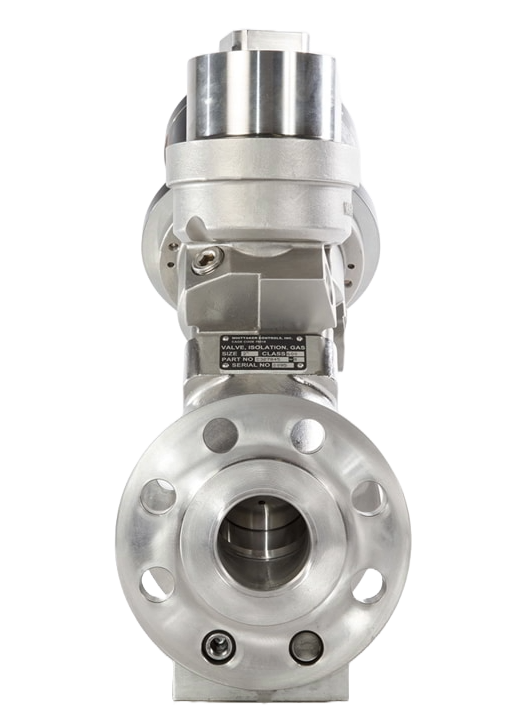
The Blowoff Valve is a 3-inch sleeve-style gas blowoff valve designed for use in aero-derivative industrial gas turbines. Its primary function is to isolate gas fuel during turbine shutdowns or emergency events, helping prevent overspeed conditions and damage caused by uncontrolled combustion.
This valve features a solenoid-pilot actuation system and operates with either 24 VDC or 95–140 VDC electrical input. It is designed with a 3-inch outlet flange and built entirely from stainless steel materials to ensure durability and compliance with NACE standards for sour gas environments.
Performance characteristics include a 110 millisecond full-stroke opening time and 1 second full-stroke closing time, meeting the rapid response requirements necessary for turbine protection. The valve is capable of withstanding heat soak temperatures up to 400°F, allowing it to function reliably in high-temperature turbine enclosures.
For safety in hazardous environments, the blowoff valve is certified to CE-ATEX Group IIA, Category 3, Zone 2, T3, supporting its use in oil and gas facilities with potentially explosive atmospheres.
This valve is often used in redundant pairs to provide dual isolation capability, increasing system reliability. Its application is critical to turbine safety systems, ensuring that fuel flow can be quickly and reliably shut off when required.
View Details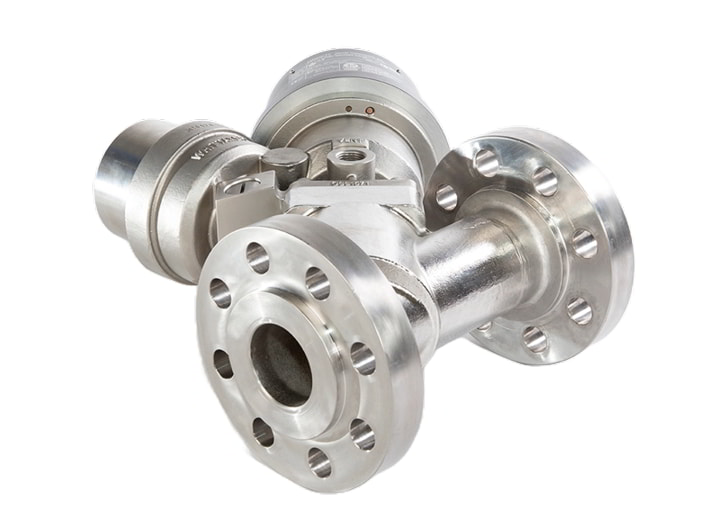
The 3” Gas Fuel Isolation Valve is a solenoid-pilot actuated sleeve-style valve designed specifically for aero-derivative gas turbines. It features a three-inch outlet flange and operates on dual voltage ranges of 24 or 95-140 VDC, providing flexibility for various power systems without compromising performance.
Constructed entirely from stainless steel, the valve complies with NACE standards for corrosion resistance, ensuring durability in harsh environments. It is engineered to withstand heat soak temperatures up to 300°F, making it suitable for high-temperature applications commonly found in turbine fuel systems.
Certified to CE-ATEX standards for Zone 2, Group IIA, Category 3, T3 temperature class, the valve is qualified for use in hazardous and explosive atmospheres, enhancing operational safety.
This valve acts as a critical safety device by isolating the fuel supply during emergency shutdowns or fuel system failures, preventing potential damage to the turbine. Typically deployed in pairs, it offers dual-redundancy to maintain safety even if one valve fails.
The valve is widely used in industrial gas turbine fuel systems where rapid and reliable fuel isolation is critical. Its design supports fast shutoff to prevent damage caused by fuel control failures or stuck throttle conditions. The valve’s durability and compliance with industry standards make it a dependable choice for maintaining operational safety in challenging environments.
View Details
The 3” Gas Fuel Isolation Valve is designed for use in industrial gas turbines within the oil and gas sector, serving as a vital safety and control device. It regulates the flow of natural gas or compressor discharge air to the turbine, enabling quick isolation of fuel supply during abnormal or emergency conditions to protect the turbine from damage.
This valve features a three-inch outlet flange and is solenoid-pilot actuated, operating on 24 or 95-140 VDC power. It is engineered to withstand high-pressure environments, with natural gas operation rated up to 900 psig and compressor air up to 640 psig. It also endures elevated temperatures, tolerating heat soak conditions up to 400°F for natural gas and up to 800°F for compressor air applications.
Constructed from stainless steel materials compliant with NACE standards, the valve resists corrosion in harsh operating conditions typical in oil and gas facilities. It meets strict safety certifications, including CE-ATEX Group IIA, Category 3, Zone 2, T3, making it suitable for use in potentially explosive atmospheres.
The valve operates with a rapid opening time of approximately 110 milliseconds and closes within 1 second, enabling prompt response to operational changes or emergency shutdown signals. Typically installed in pairs to provide dual-redundancy, these valves enhance system safety by ensuring backup isolation capability.
Overall, the 3” Gas Fuel Isolation Valve is essential for maintaining safe, efficient, and reliable turbine operation by controlling and isolating fuel or air flow, thereby preventing damage and reducing the risk of costly downtime in oil and gas power generation applications.
View Details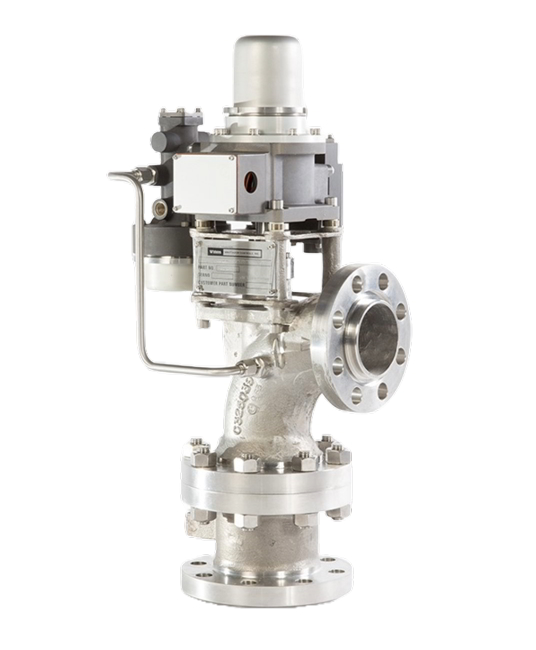
The 3-inch sleeve-style hot air purge valve is designed for aero-derivative industrial gas turbines to control the flow of hot compressor bleed air used in critical purge operations. This valve is normally closed and solenoid-pilot actuated, available in two- or three-inch sizes with elbow sleeve design. It operates on 24 or 125 VDC power and is constructed with ANSI B16.5 Class 600 raised face flanges.
Key specifications include a physical size of approximately 7.5 inches wide and 25 inches high, weighing between 84 to 91 pounds. It can handle line pressures up to 500 psig and actuation pressures between 80 and 125 psig. The valve is rated to operate in fluid temperatures ranging from 32°F to 1100°F (bleed air), and can withstand ambient temperatures between –20°F and 240°F with heat soak up to 400°F for 1 to 2 hours when de-energized.
Performance characteristics include a flow capacity of about 1.2 pounds per second of compressor bleed air with a maximum pressure drop of 0.70 psi across normal operating conditions. Internal leakage is minimal, rated at 0.00025 pounds per minute. The valve features a rapid full stroke response time of 1 second for both opening and closing cycles. It includes a position indicating switch and supports continuous duty operation.
Functionally, this valve plays a crucial role in purging residual fuels, such as diesel, from the combustor fuel lines when switching fuels, preventing deposits that can impair turbine performance or cause damage. The valve is often installed in pairs for dual redundancy to enhance safety and operational reliability. With millions of field operating hours, this design reflects high durability and precise control essential for efficient and safe turbine operation.
View Details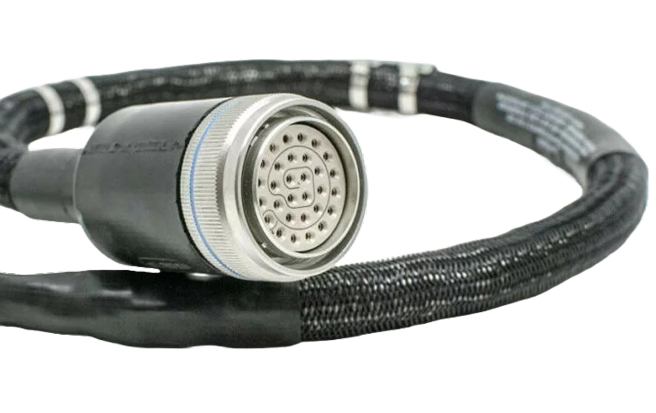
The E3/E17 off-engine electrical cables are designed for resilience in the toughest of applications. To protect the critical wiring components from exposure to harsh environmental conditions, these cables incorporate rugged materials and advanced protective features.
Used with LM2500 gas turbines, these cables are located outside the engine and serve as essential links between the turbine’s internal control systems and external instrumentation, control panels, and auxiliary equipment.
Built to withstand vibration, moisture, extreme temperatures, and chemical exposure, E3/E17 cable harnesses include stainless steel connectors, rubber or fluoropolymer over-molding, and electromagnetic interference (EMI) shielding to maintain signal integrity and durability.
The E3/E17 classifications indicate different cable configurations and connector types tailored for specific LM turbine system requirements. Both ensure reliable transmission of electrical power and control signals critical to turbine operation, safety, and performance monitoring.
Manufactured with custom materials and protective coatings, these cables comply with hazardous location standards such as ATEX and UL/CSA certifications. Their robust design provides long service life with minimal maintenance, supporting high fleet availability and operational reliability.
In oil and gas applications, where equipment is exposed to extreme environments and strict safety regulations, the E3/E17 off-engine cables offer dependable, durable connectivity. Their rugged construction and certification for hazardous locations make them ideal for maintaining safe, continuous turbine operation in demanding field conditions.
View Details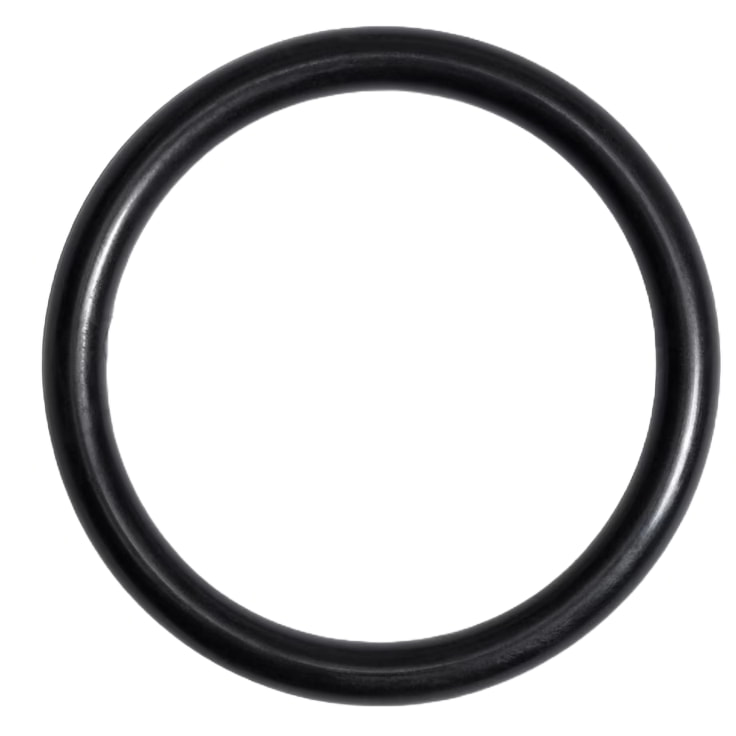
The Packing O-Ring is a sealing made from durable fluorocarbon rubber, designed for use in high-temperature and chemically harsh environments. Commonly used in gas turbines such as the LM2500 series, it provides a tight seal between components to prevent the leakage of fluids or gases.
This O-ring has an inside diameter of 27/64 inches, a thickness of 5/64 inches, and a hardness of 75 Shore A. It is built to handle operating temperatures from -20°F to 400°F, making it suitable for sealing joints in systems exposed to fuels, oils, and high pressures.
Its compact size and resistance to compression set and fluid exposure make it ideal for use in shafts, housings, and valve assemblies where reliable sealing is critical to turbine performance and safety.
View Details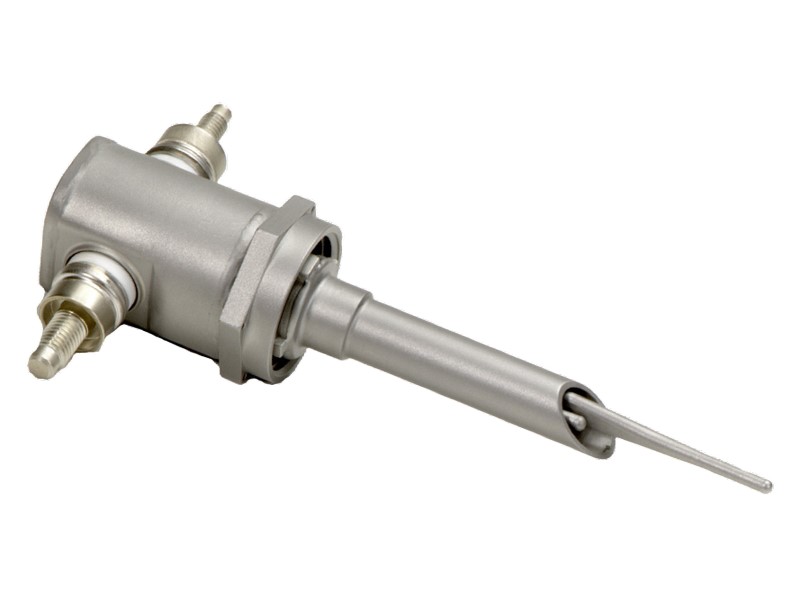
The T5.4 thermocouple is a temperature-sensing probe used in LM2500 gas turbines to measure exhaust gas temperature (EGT). The label T5.4 refers to its specific position in the turbine\'s exhaust thermocouple array—zone T5 (turbine exhaust), sensor 4. These sensors are part of a system that monitors thermal conditions at multiple points in the exhaust stream.
This thermocouple operates in high-temperature environments, withstanding continuous exposure up to approximately 1100°C. It is built to maintain accuracy and reliability under the thermal stress and vibration typical in gas turbine applications.
T5.4 thermocouples are often used with flexible
harness systems. This allows operators to replace individual probes without removing the entire harness, improving maintenance efficiency and reducing downtime.
By providing real-time exhaust temperature data, the T5.4 thermocouple supports engine control, performance optimization, and safety monitoring in industrial gas turbine operations.
View Details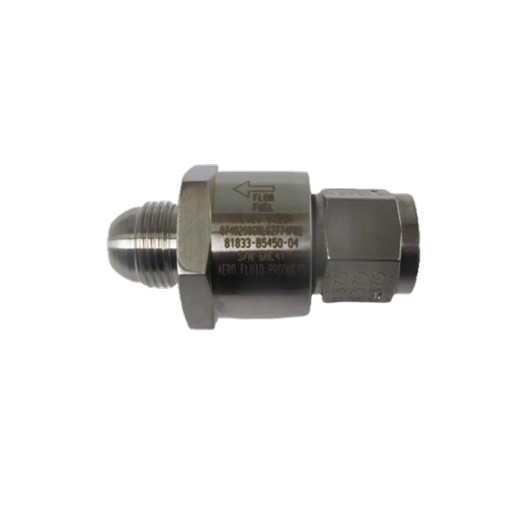
The Gas Check Valve is a unidirectional valve used in LM2500 gas turbine systems to prevent the reverse flow of combustion gases into critical fuel and oil lines. Its primary function is to maintain the correct flow direction, ensuring that gases only travel toward the combustion chamber and not back into upstream components, where reverse flow could cause damage, safety risks, or system inefficiencies.
This check valve is engineered to operate under the high-pressure and high-temperature conditions typical of industrial gas turbine environments. It serves as a passive safety component, requiring no external power to function, and contributes to the overall reliability and integrity of the turbine system.
Commonly found in aero-derivative gas turbines used in oil and gas applications, the check valve is essential for maintaining proper system performance. Its inclusion in the turbine’s gas path helps ensure safe operation by minimizing the risk of combustion gas contamination in auxiliary systems.
View Details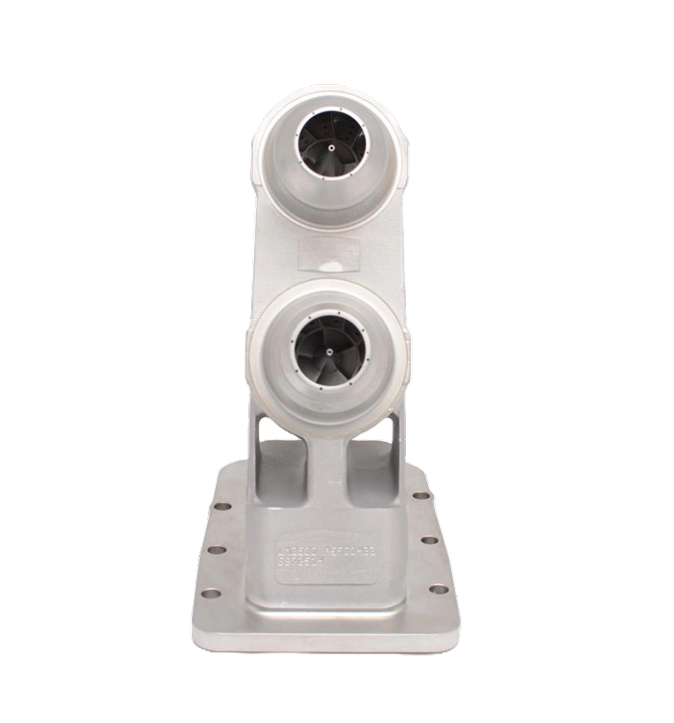
The 2-cup Fuel Nozzle is a precision-engineered component used in gas turbines, specifically in the oil and gas industry. Its primary function is to inject liquid fuel into the combustion chamber in a fine, atomized spray, allowing for optimal mixing with air and efficient ignition. This ensures stable combustion, better fuel efficiency, and reduced emissions—key performance factors in industrial turbine applications.
The “2-cup” design refers to the nozzle’s dual flow passages, which help balance fuel distribution across the combustion zone. This promotes more uniform flame stability and lowers the risk of hot spots that can cause thermal stress to the turbine hardware. The nozzle is typically used on “base” engines and is suited for continuous-duty operations.
The L47197P05 variant is known for its compatibility with LM2500 turbine configurations and is built to endure harsh operating environments. It features durable materials and a design that withstands high temperatures and pressures commonly found in oil and gas turbine systems.
View Details